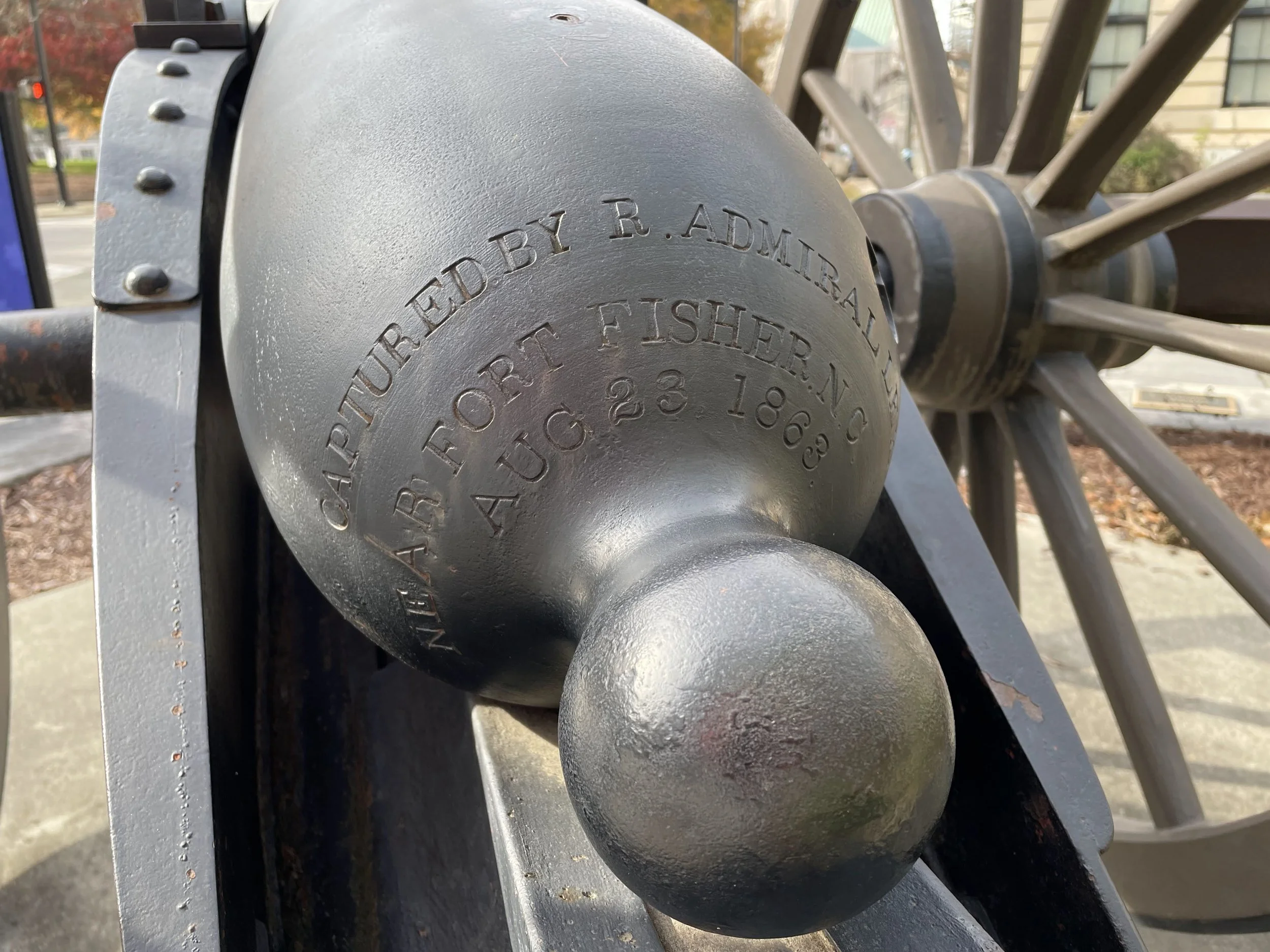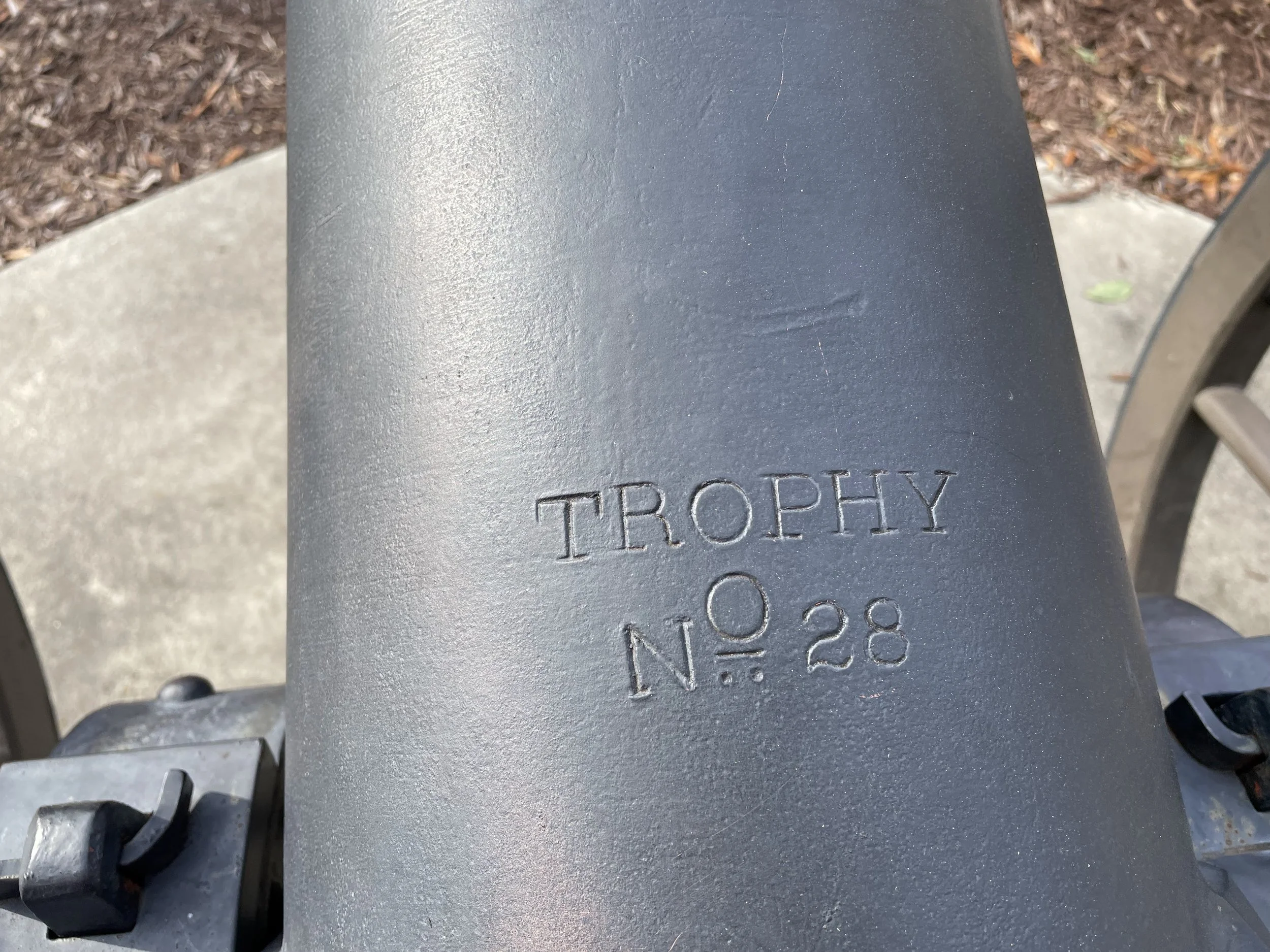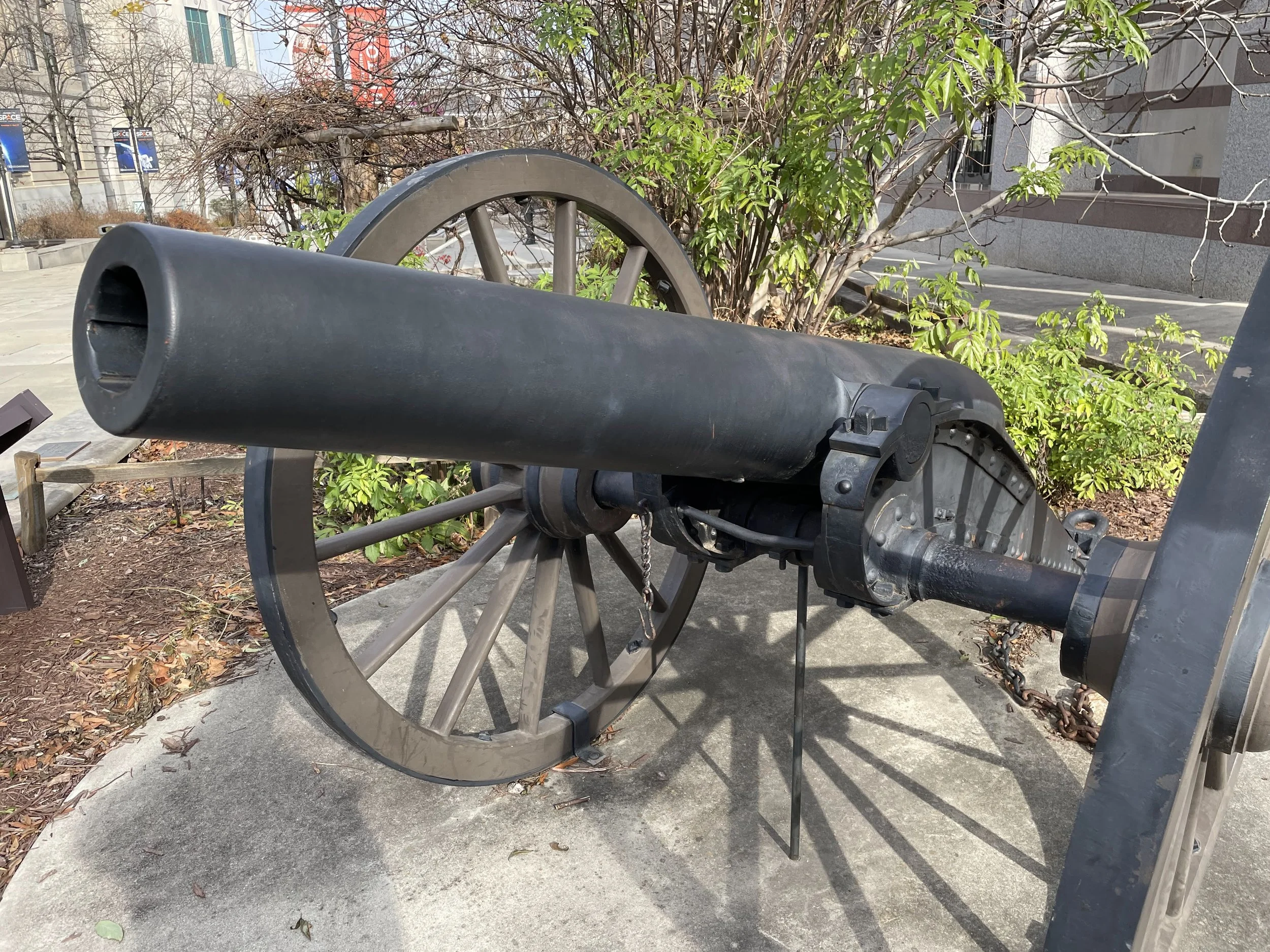4-Inch Fawcett Preston Rifle in Raleigh, North Carolina
The 4-Inch Fawcett Preston Rifle is now displayed alongside the 12-Pounder Whitworth at Fort Fisher State Historic Site (April 2025).
Update: 4-Inch Fawcett Preston Rifle Number 136 has been moved to Fort Fisher State Historic Site as of April 2025. It now sits alongside the 12-Pounder Whitworth. Both guns were captured together in August of 1863. The post below was written in December of 2024 when the cannon was still displayed in Raleigh, North Carolina.
4-Inch Fawcett-Preston Rifle (or 4-Inch Blakely Rifle) Number 136 displayed in Raleigh, North Carolina outside the North Carolina Museum of History
A 4-Inch (or 18-Pounder) Rifle manufactured by Fawcett, Preston, and Company in Liverpool in 1862 is displayed near the Old State Capital and outside the North Carolina Museum of History in Raleigh, North Carolina. This rifled cannon was paired with a 12-Pounder Whitworth Rifle to form a two gun battery which was used to defend the coast north of Fort Fisher near Wilmington, North Carolina. On August 18th, 1863, the battery engaged blockading warships of the US Navy which were trying to complete the destruction of the beached blockade runner S.S. Hebe. On August 23rd, the US Navy returned in force to interrupt the salvage operations around the battered Hebe. Once again this cannon and the Whitworth engaged the blockaders, but in this encounter the US Navy brought the overwhelming force of the heavy steam frigate USS Minnesota and its 46 Dahlgren and Parrott cannons.
The circumstances of the capture of this cannon are described in much greater detail with period sources in the post about the 12-Pounder Whitworth at Fort Fisher.
The cannon in Raleigh is identified by an adjacent sign as a “Blakely” cannon. Fawcett, Preston, and Company made many cannon designed by former Royal Artillery Captain Theophilus Alexander Blakely. Many of these cannon are marked “Blakely’s Patent” - a marking that is missing from the cannon in Raleigh. Ripley identifies this cannon as a “Probable Blakely” (pg. 152). While noting the possible connection to Blakely, I would follow Fort Branch and identify this as a Fawcett-Preston Rifle (see below).
This cannon is stamped number “136” on its right trunnion and muzzle face. As noted, it is marked with “Fawcett, Preston and Co. Liverpool.” and it is engraved on its breech “Captured by R. Admiral Lee near Fort Fisher, N.C. August 23, 1863.” It is mounted on it’s original iron carriage (the wheels are replacements).
Number 136 was part of a shipment of six identical rifles to the Confederacy, three of which survive to the present day. Number 137 is in private hands. Number 138 is displayed at Fort Branch near Hamilton, Carolina. Number 138, along with the rest of the armament of Fort Branch was thrown into the Roanoke River in 1865 to prevent capture. Seven of Fort Branch’s cannons were recovered from the Roanoke in the 1960s and 1970s and are displayed at Fort Branch (which will be the subject future posts.) Fort Branch identifies Number 138 as a “Fawcett-Preston” Rifle.
Number 136 was taken as a trophy after its capture by the US Navy and was displayed for more than a century at the Washington Navy Yard. The Iron Guns of Willard Park by John C. Reilly shows a photo of Number 136 while still at WNY (pg. 81 — available on Google Books.).
4-Inch Fawcett-Preston Rifle displayed at Fort Branch in North Carolina. This cannon was recovered from the Roanoke River in 1972.
“136” can be seen stamped on the right trunnion.
The 6×6 hook slant rifling may be seen. A number is stamped on the muzzle. Ripley and Reilly both read this number as “921.” I see it as “136” but upside down.
The interpretive sign displayed by the Number 136




















